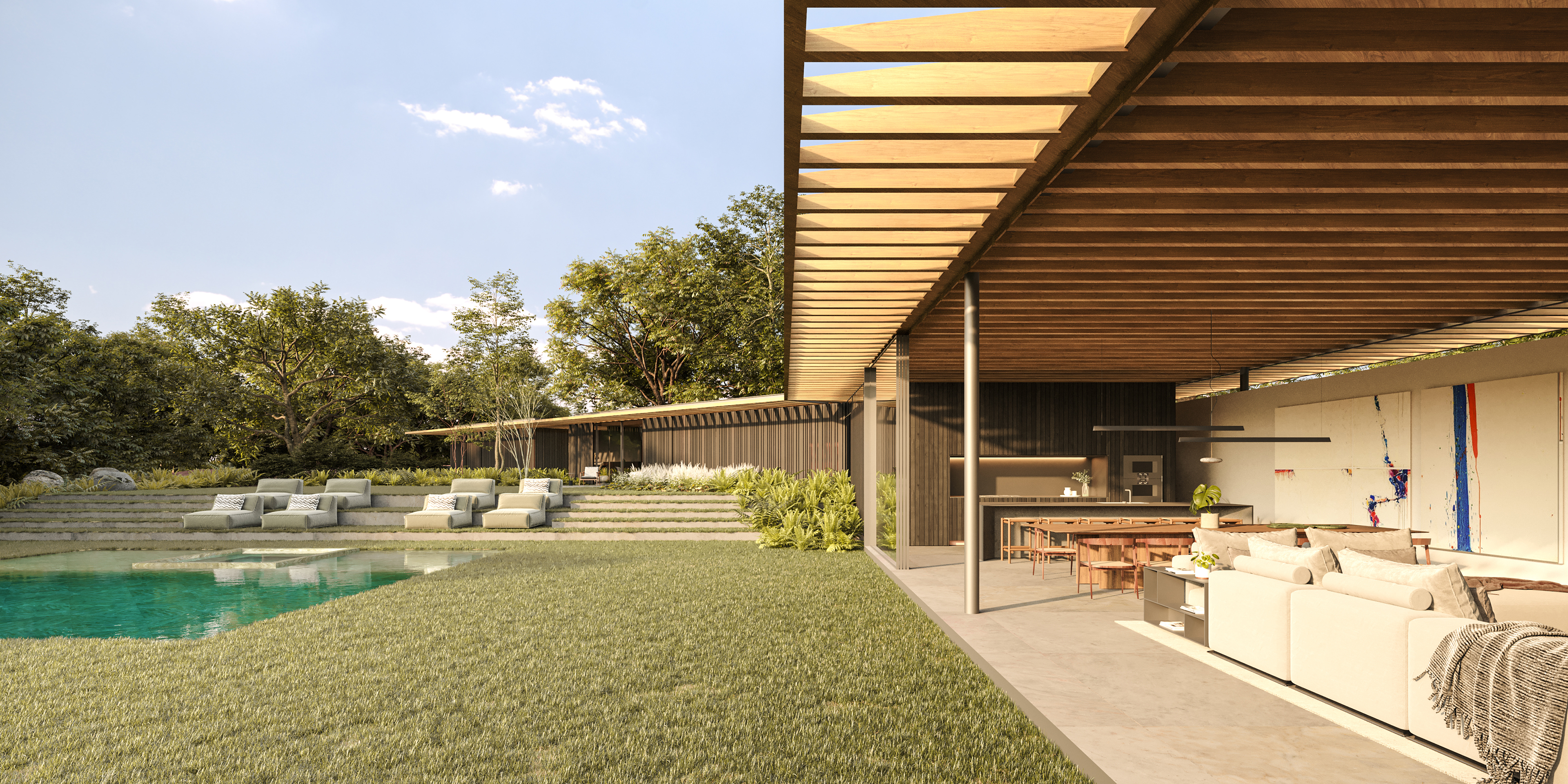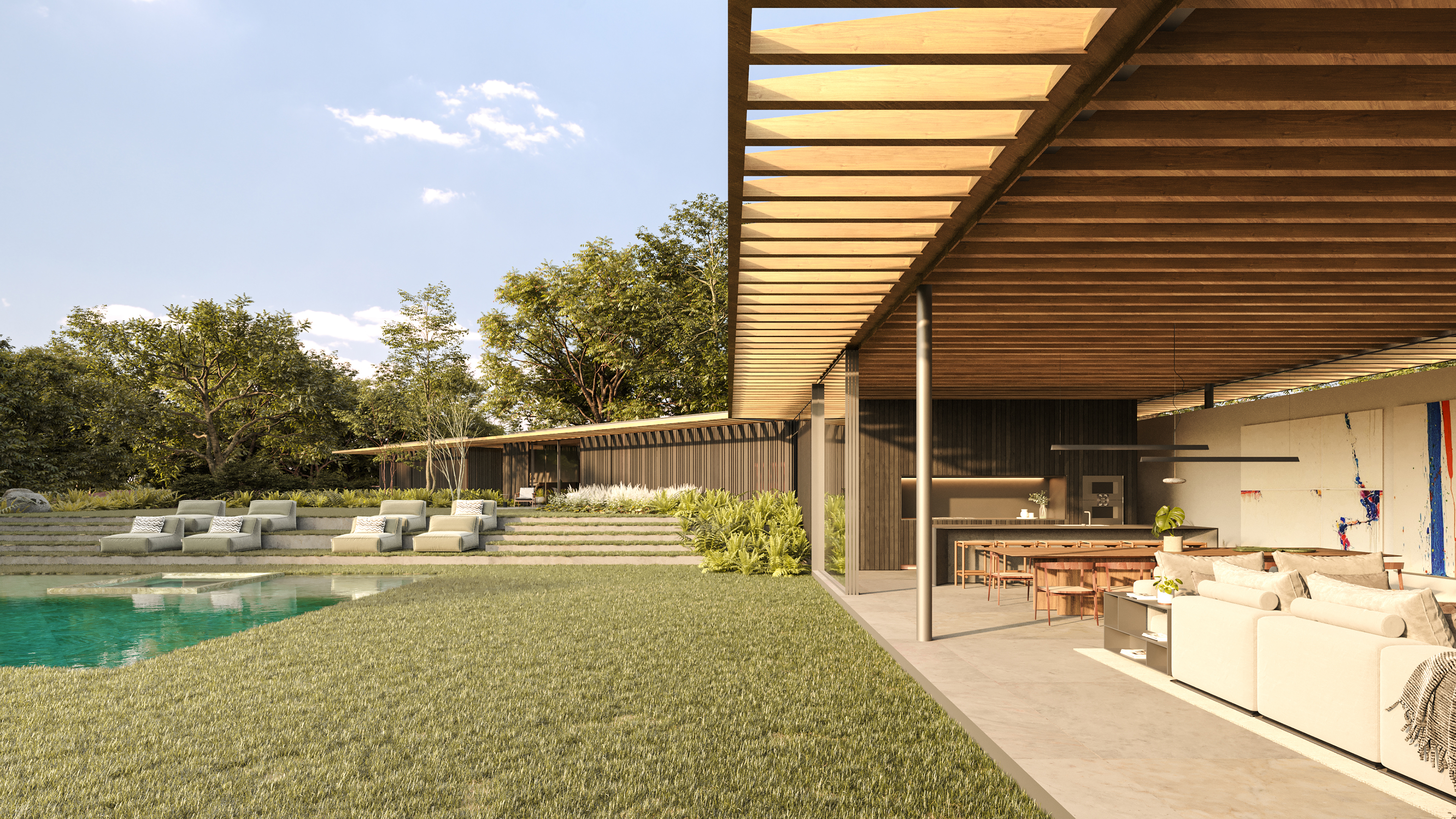
CS House
Califórnia, Estados Unidos

FACTS
- Total area
- 6000 m2
- Built area
- 970 m2
- Start
- 2023
PROJECT
- Architecture
- Jacobsen Arquitetura
- Architecture Team
- Paulo Jacobsen, Bernardo Jacobsen, Edgar Murata, Marcelo Vessoni, Francisco Rugeroni, Lucila Dib, Júlia Marotto, Raimundo Borges, Laura Faria, Marília Garson, Alahyse Paiva, Marcos Mendes
- Interior Design
- Jacobsen Arquitetura
- Interior Design Team
- Paulo Jacobsen, Bernardo Jacobsen, Edgar Murata, Marcelo Vessoni, Marcela Guerreiro, Fernanda Marchesan, Caroline Rodrigues, Camila Alves
Off the coast of Malibu, California, a large rock formation juts into the Pacific Ocean, where Point Dume marks the end of Santa Monica Bay. It is in this region, one of the most exclusive on the American west coast, that our project is located, inspired by the sunny and easygoing spirit of Little Dume Beach.
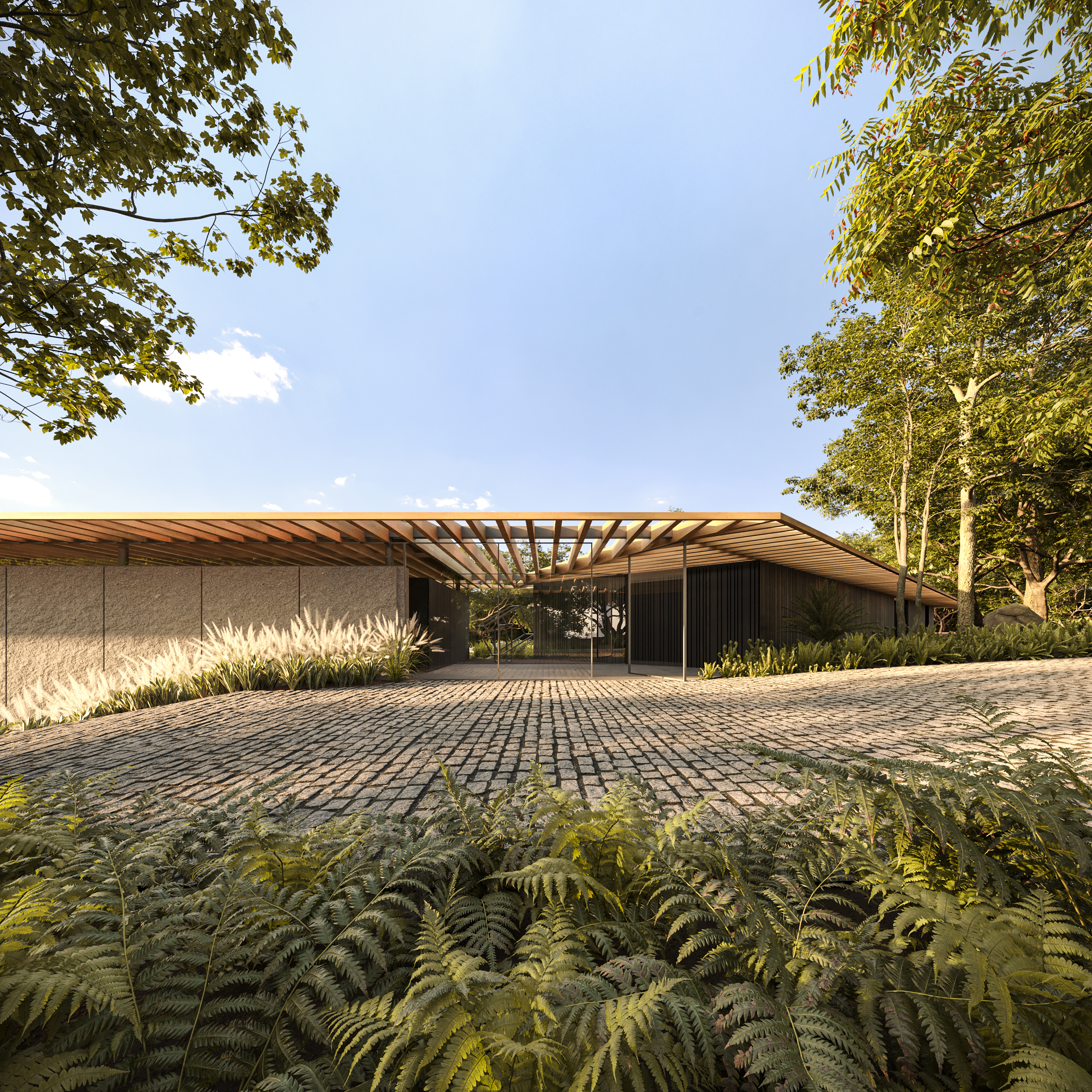
Our goal was to create a tropical residence that adapted to the particularities of the land, intervening as little as possible in the natural environment. To achieve this, we worked with the different levels found on the lot, respecting its height limitations, and maintained the main existing trees. With direct access to the beach, the house is set around a large lawn with a swimming pool, completely integrating with the social areas, which open onto the outdoor area. A grandstand follows the slope of the land, with a privileged view of the sunset and the ocean horizon.

The program is distributed over two floors: guest bedrooms, wellness space, gym and home theater on the lower floor and living, dining, kitchen and suites on the ground floor. The social area follows the descent of the grandstand, gaining greater ceiling height and overlooking the view of the valley, which resulted in a cantilever that also serves as a roof for the garage.
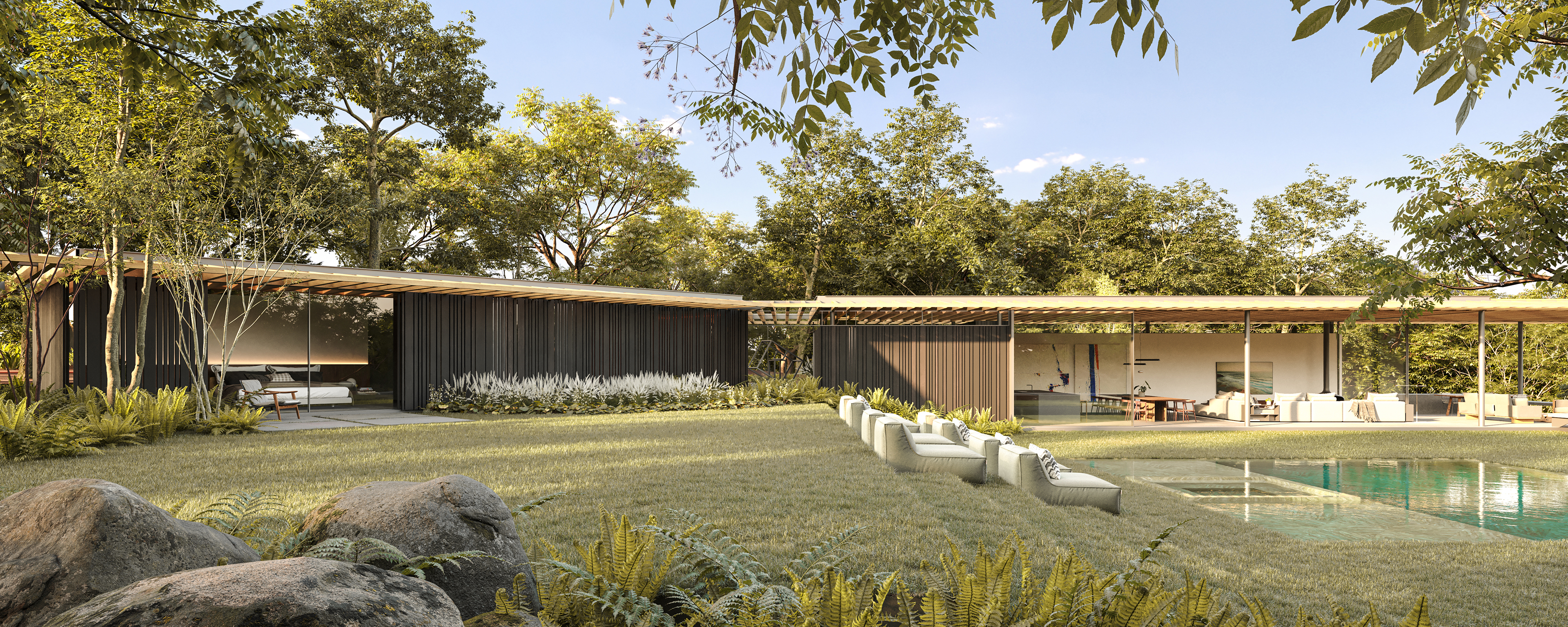
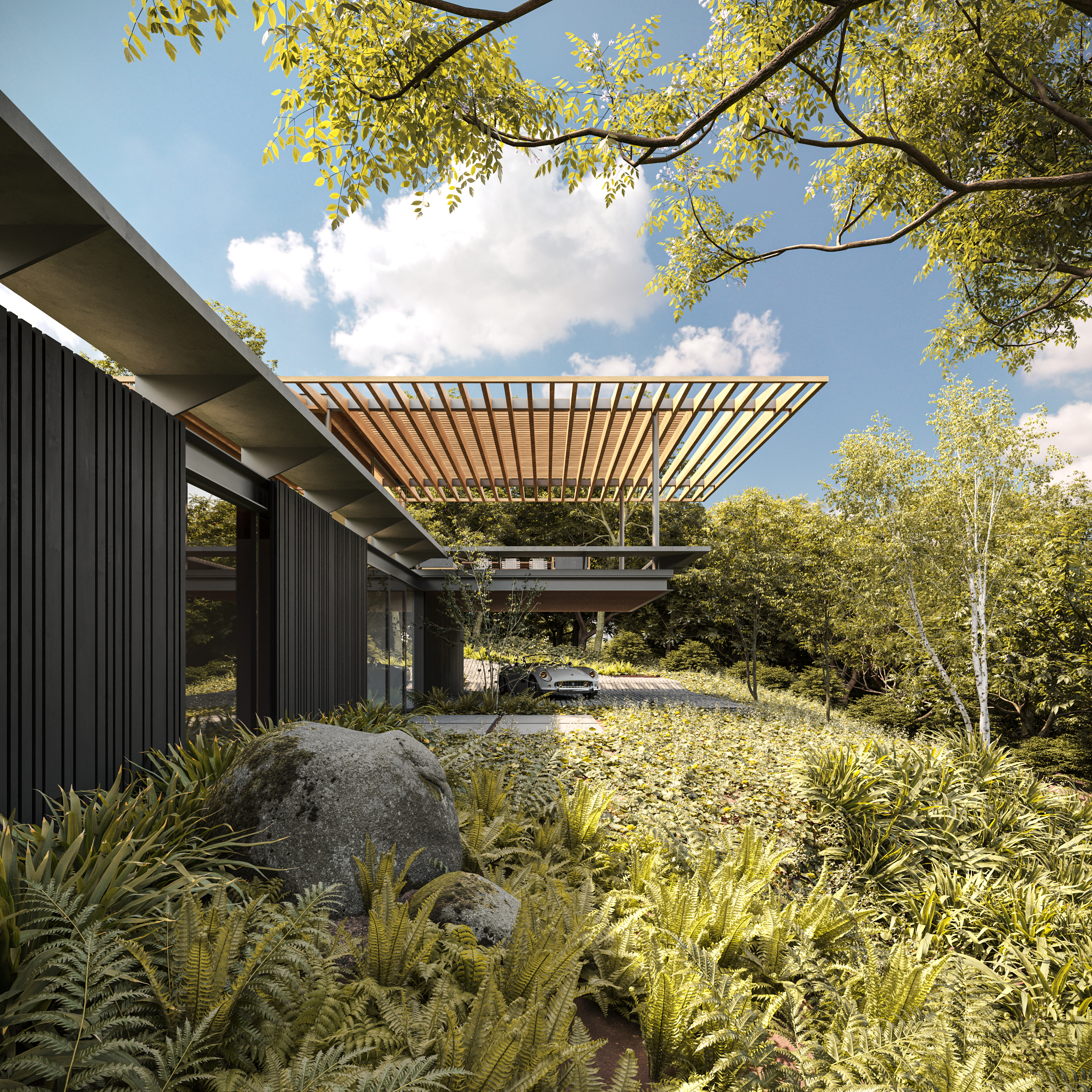
The roof of the house is visually detached from the volumes, giving an aspect of lightness to the project, very inspired by mid-century Californian houses. On the ceiling, we opted for laminated wood profiles that extend over the eaves, in reference to boat structures. On the façades, in a reference to Japanese fishermen, charred wood panels were used to allow light and natural ventilation into the spaces.
